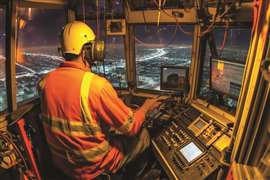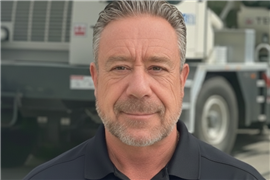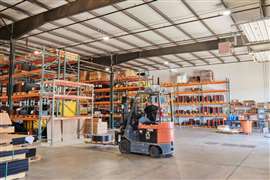How to utilize risk management tools
30 November 2023
Nothing is certain except death and taxes.” – Benjamin Franklin.
Today, Mr. Franklin would likely add “insurance” to his famous idiom. In the crane and specialized transportation realm, insurance is a certain and necessary element when doing business in today’s ever-litigious environment. But not just any insurance.
 Photo: Adobe Stock
Photo: Adobe Stock
How do companies in the crane, rigging and specialized transportation space know if they have the right insurance coverage and the right risk management principles in place? Beyond this question are a host of critical issues that fall under the insurance and risk management umbrella.
Navigating insurance
In the early 1990s, the Specialized Carriers and Rigging Association (SC&RA) created an insurance task force with the goal of helping its members navigate insurance and risk management after several seemingly unfair judgments. Now, some 30 years later, that original task force has evolved into the SC&RA Insurance and Risk Management Committee, which is a strong advocate for member companies in many strategic and concrete ways.
“In the ever-changing insurance world, as it relates to costs and capacity, the SC&RA Insurance and Risk Management Committee endeavors to stay in constant contact with brokers and insurance companies that support our industry so we can pass on any information that may impact our members so they can evaluate and respond to their individual needs as soon as possible,” said Scott Bragg, president of the SC&RA, and president and CEO of Bragg Companies, based in Long Beach, CA. He is also chairman of the SC&RA Insurance and Risk Management Committee.
The intrinsic value this committee adds to the Association and the industry at large is enormous.
“This committee really advocates for member companies who need solid advice about so many aspects of risk management and insurance,” said Bragg. “They provide guidance on many issues, from safety to risk management to contract language. Their input is invaluable.”
Contract language has been one of the most important contributions that the SC&RA Insurance and Risk Management Committee has made. State-specific contract language is a vital element of risk management, according to Joel Dandrea, CEO of SC&RA.
“There are inherent risks in doing what our members do,” said Dandrea. “Assuring they have the most effective insurance coverage, and that they can effectively defend themselves, is a critical aspect of how we advocate for our members.”
For example, the Borrowed Servant Doctrine is a critical issue for member awareness, he said.
“Over the past several years, we have addressed this topic through Workshop and Annual Conference educational sessions, and we have also included this subject in articles in American Cranes & Transport,” said Dandrea. “It is an element of risk management that we must continually address.”
Winning judgments
Through the years, several court cases have been won by crane companies that incorporated borrowed servant language in their contracts. Such was the case last summer when a judge ruled that a crane company was not liable in a tower crane accident that occurred in Dallas a few years ago.
“Over the past several months, we’ve heard from several of our members and members of the Insurance and Risk Management Committee regarding the verdict in the tower crane accident case in Dallas,” said Dandrea. “The critical trial issue was the dispute on which entity was the employer of the operator, such that it could be held liable for alleged negligent actions of the operator. In short, the lessor/lessee agreement, more specifically the borrowed servant language, ultimately shifted the liability to the lessee and helped protect the lessor.”
The borrowed servant language is not a new argument, according to Bill Smith, executive vice president of NBIS.
“The first argument in a loaned employee case dates back to 1928,” he said. “Several cases in the crane industry through the years have successfully relied on the Borrowed Servant Doctrine. The crane in Dallas was a bare rental crane. The contract language was a very important aspect of this judgment. Other crane companies were also involved, including the company that put the crane up four years earlier. If you touch it, you are involved.”
In this case, and many others, contract language saved the day. How can crane-owning companies assure that the language in their contracts is worded correctly and is binding in terms of who is in control of the crane and the operator?
“Not every insurance company will go to the lengths we will go to to help you,” said Smith. “These are the terms and conditions for risk management. We will give you the tools to help you manage your risk through contract management and other avenues.”
Deal breakers
There are so many nuances in contract language that must be considered. Assuring the proper OSHA and ANSI standards language is critical, Smith said.
Another issue that arises is when a crane rental deal is being negotiated and the general contractor asks to change the contract language. There are still crane companies that, to get the job, will agree to change contract language.
“Contract language will normally prevail in the majority of lawsuits,” said Tiffany Myhre, executive director of Precision Heavy Haul, and who serves on the SC&RA Insurance and Risk Management Committee. “If the contractor was responsible for maintaining the equipment and managing the operator at that time, per the contract, they would bear the burden of negligence. They should have also inspected the equipment thoroughly before leasing for safety and maintenance purposes.”
Myhre said that ultimately, if a lessee won’t sign an agreement, the lessor needs to make the often-difficult decision of how to proceed.
“It’s important to arrange good communication from the start and make sure agreements are put into place before any work begins,” Myhre said. “There should also be open dialogue between the lessee and lessor to come to a mutual agreement with contracts and be open to negotiations that fit the needs of both parties. If boundaries are outlined from the start and discussed, as well as documented in writing, the parties know who and what they are responsible for to plan appropriately.”
Avoiding lopsided contracts
At the end of the day, if both parties don’t agree, and a lessee won’t sign an agreement, it may be time to discontinue the working relationship and search for other vendors or alternative subcontractors that may better fit the interests of the contractor, Myhre said.
“Companies have to be willing to walk away if a general contractor/lessee won’t accept the terms of the contracts that protect our members and our industry segment,” she explained.
Smith said informed crane companies will walk away from lopsided contracts. He used the example of a Florida company that was willing to give up a lucrative deal because the contractor was asking for contract language concessions.
“It can be very lopsided in terms of risk,” said Smith. “Some companies are willing to walk away from this type of risk. But other companies will not.”
Some states have made operating cranes a risky business. The SC&RA Insurance and Risk Management Committee is constantly looking at state laws and advocating for its members operating in states with mandates that could heighten their exposure to risk.
Jeffrey Haynes, national heavy construction equipment practice leader for USI Insurance Service, a SC&RA preferred producer, specializes in providing tailored coverage for the crane and rigging sector.
“Regarding the Borrowed Servant Doctrine, the key to effectively executing the language is incumbent on the state and the legal representation of the state you are in,” Haynes said. “You have to have a carrier that understands that and will allow dual attorney representation if borrowed servants’ is going to be a key to risk transfer in your state.”
Defenses vary
Haynes explained that the Borrowed Servant Doctrine is not applicable in all states and the 50-state compendium has to be understood. He said that attorneys like Jesse Callahan, “the current attorney of choice,” distinctly knows how to position a particular case, and depending on the state and the affirmative defenses available. Callahan is also a member of the SC&RA.
“The defenses of crane and rigging companies vary between states and are established by the indemnity laws and common law,” he said. “When we go into a specific state, we either position ourselves as a subcontractor or as a supplier of equipment and personnel. There are also scope of work matters. It could be you are in a state where it’s more advantageous to be a supplier of equipment and personnel. When you send a crane with an operator to a jobsite you are really just a supplier or equipment and personnel that operates under the direction and control of a third party.”
Rick Emery, owner and president of Emery & Karrigan and also a SC&RA preferred producer, assessed that the SC&RA insurance committee has been beating the risk management drum for years.
“The principles I’m talking about, from the wording on the back of the daily ticket to the specific contract language, we have been talking about these decades,” said Emery. “The collective owners and/or managers of the crane and rigging industry have heard all this, and maybe they want to talk about something new. But those who are listening and applying these principles are in a much better position to cope with the changes we are facing right now. Those people who have not implemented these risk management procedures will pay for it. They are running on borrowed time.”
Contract language includes several different points of risk management that the industry can utilize to mitigate liability when something happens on a jobsite. Over the past few years, the insurance industry has been “turned upside down and shaken hard,” Emery said.
“We haven’t seen a marketplace like this since the mid-1980s,” he said.
Emery cited NBIS’ Bill Smith, who often says: “You can try to premium your way out of it or you can risk manage your way out of it.”
“In today’s market, if you are trying to premium your way out of it you are going to be in tough shape,” said Emery. “Post pandemic, juries don’t seem to care about right or wrong. It’s possible that we are reaching a time when premiums will start to surpass the limit you are buying.”
The bottom line, Emery said, is that companies need to fall back on the risk management tools that are available through the SC&RA’s preferred providers.
“If you haven’t implemented them by now, you should be having serious conversations about how to use and implement them,” he said. “You are running without protection and soon you will become part of the problem rather than part of the solution.”
Why ‘Borrowed Servant’ language is so important
The Borrowed Servant Doctrine – sometimes referred to as the dual employment, loaned employee or special employer doctrine – is a legal principle wherein an employee “borrowed” by another entity (typically another contractor or customer) is deemed to be under the control and direction of that borrowing entity for a particular task or period.
 Photo: Adobe Stock
Photo: Adobe Stock
In the crane and rigging world, think of it like this: The Borrowed Servant Doctrine makes the other contractor (your customer) the “special employer” of your operator (the “borrowed servant”), who is temporarily used, loaned or rented to the other contractor for a specific purpose (operating the crane).Consequently, the borrowing entity becomes the “special employer” and is held responsible for the actions and, sometimes, the welfare of the borrowed employee during the period of loan. This doctrine often extends Workers’ Compensation (WC) immunity of the borrowing entity (the “special employer”) to the borrowed employee.
Understanding and applying the Borrowed Servant Doctrine is one of the most important things a crane rental company can do and can provide a formidable defense against unanticipated liabilities, according to Billy Smith, vice president of risk management at NBIS. He cites five reasons why companies need to state the Borrowed Servant Doctrine language in their contracts:
- Risk Mitigation: Including the Borrowed Servant Doctrine explicitly in crane rental tickets ensures that risks associated with the actions of the crane operator, when under the control of the borrowing entity, are mitigated. It helps in reducing the direct liability of the lending company (the original employer) in the event of mishaps or negligent acts.
- Clarity in Liability: Clearly defined terms relating to the Borrowed Servant Doctrine establish a legal clarity regarding which party is responsible for the borrowed employee’s actions. It preempts any ambiguity about liabilities and responsibilities during the rental period, ensuring that accountability is placed appropriately based on control and supervision.
- Financial Protection: Specifying this doctrine in the rental ticket safeguards you from potential financial burdens arising from legal claims, medical bills or compensations due to accidents or mishaps occurring under the supervision of the borrowing entity.
- Workers’ Compensation Immunity: The doctrine facilitates the extension of workers’ compensation immunity from the borrowing entity to the lent employee, protecting the lending company from potential claims. This is especially pertinent if the borrowed employee gets injured while executing tasks under the direction of the borrowing entity.
- Strengthening Legal Defense: In the context of legal disputes, having the doctrine explicitly stated in the rental agreement provides a fortified legal standing. It enhances the lending company’s defense by having a predefined contractual understanding of liabilities, making it less vulnerable to unwarranted legal challenges.
STAY CONNECTED


Receive the information you need when you need it through our world-leading magazines, newsletters and daily briefings.
CONNECT WITH THE TEAM











